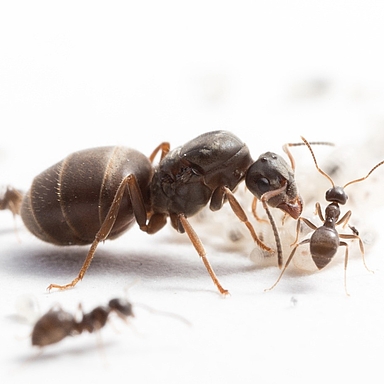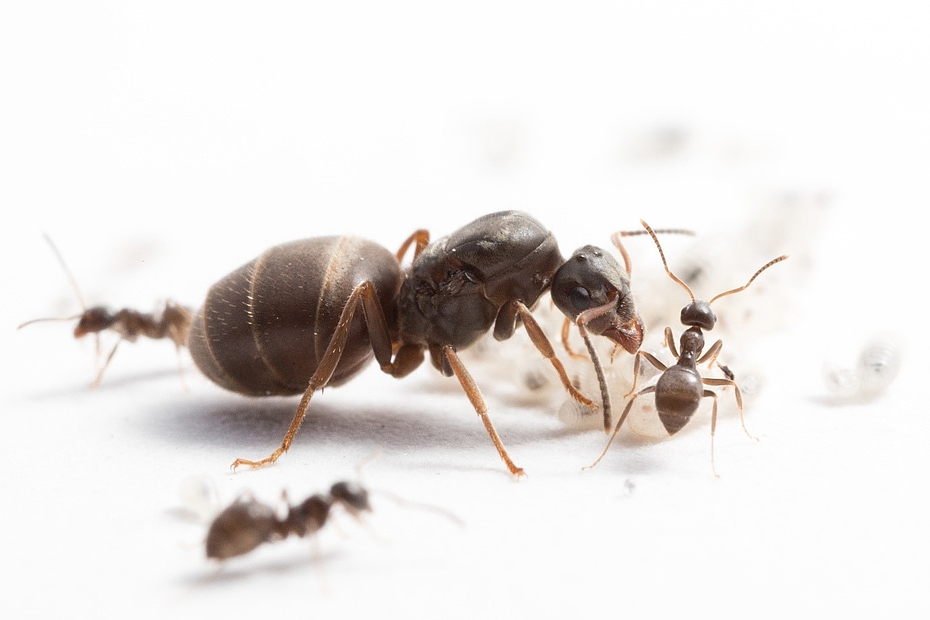Project 11.2

- PhD student: Max Bolder
- Supervisor: Romain Libbrecht
- Co-Supervisors: Joseph Colgan, René Ketting
- Further TAC-members: Susanne Foitzik
- Research Group
Insect societies are characterized by queens that monopolize reproduction, and sterile workers that perform all non-reproductive tasks. While this division of labor has been extensively studied in mature colonies, relatively little is known about its establishment from a single founding queen, which transitions from expressing behavioral pluripotency to becoming strictly specialized in egg production. In my PhD project, I aim to identify the molecular mechanisms that control such queen behavioral specialization in ants.
Division of labor is a key feature in the evolution and functioning of insect societies. In established colonies, highly fecund queens have a monopoly on reproduction, while sterile workers perform all tasks necessary to maintain the colony, including brood care. In the initial foundation phase of a colony, the queen establishes the colony alone and is thus pluripotent in its behavior, producing eggs and caring for the brood, from which the first group of workers emerges. This transition from pluripotent founding queens to specialized reproduction unit in the colony recapitulates the evolutionary transition to eusociality from subsocial ancestors. To date, very little is known about the mechanisms that control this transition in queen behavior, and thus, research on these mechanisms would contribute to a better understanding of the development, functioning, and evolution of insect societies.
Recent results from our research group have revealed that the brood care behaviour of queens of the black garden ant Lasius niger is unexpectedly flexible. Manipulating the presence of workers and accurately measuring the behavioral response of queen ants showed that the presence of workers is essential to inhibit the brood care behavior of queen ants (Majidifar et al, 2022). Not only young queen ants, but also queens that had been in established colonies for many years returned to brood care behavior after worker removal. This suggests that the presence of workers not only initiates but also maintains the queen behavioral specialization. We are using RNAseq to detect differential gene expression in the brains of Lasius niger queens depending on their social environment and their brood care behavior. To further investigate genes of interest, we plan to functionally validate their role in driving the queen specialization, as well as characterize their spatial and temporal patterns of expression.
Preliminary experiments suggested that the presence of workers had no effect on queen brood care behavior when treated with chemical inhibitors of p300/CBP histone acetyltransferases and DNA methyltransferase. This suggests that epigenetic processes such as histone acetylation and DNA methylation may play a role in regulating the social control of queen grooming behavior. To investigate this further, I will use various sequencing technologies to assess potential epigenetic changes in response to manipulation of the social environment and to determine the genomic location of epigenetic marks and their association with behavioral variation and gene expression.
